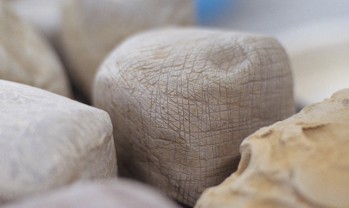Event
UEMATSU Eiji Solo exhibition “The Sky that the Rabbits Saw”
Jun 11, 2016 (sat) – Jul 31, 2016 (sun)
Hours: 11:00 ~ 19:00(entry up to 15 minutes before closing.)
Closed: Monday (Tuesday if the Monday is a national holiday)
Admission: free
http://gallery.kcua.ac.jp/exhibitions/20160611_id=8357#en
Artist:UEMATSU Eiji
Venue
@KCUA Kyoto City University of Arts Art Gallery
http://www.kcua.ac.jp/gallery/home-en
Access: Horikawa-Oike Gallery 1F, 2F 238-1 Oshiaburakoji-cho, Nakagyo-ku, Kyoto, 604-0052, Japan
Tel: 075-253-1509
Hours: 11:00 ~ 19:00(entry up to 15 minutes before closing.)
Closed: Monday (Tuesday if the Monday is a national holiday)
Description
@KCUA (Kyoto City University of Arts ART GALLERY) will be holding the solo exhibition of Eiji Uematsu “The Sky that the Rabbits Saw”. Based in Marubashira, Iga, he creates works made of earth, primarily ceramics. Until now, he has been constantly creating a wide variety of works including not only ceramic works which are usable, but installations with deliberate use of the space and interactive works which focus on dialogue with audiences. This exhibition centers around his latest installation, and it also shows his multifaceted works which give us an overview on his whole creative career until today.
He developed first an interest in creating oil paintings and drawings. Later, in the process of groping for primordial expression, he encountered a material, that is earth. Speaking of his practice, Uematsu says, “Upon seeing my work ceramic artists would say ‘What’s he doing, anyway?’, but contemporary artists would say ‘That is just ceramic art’. The reaction of the people who come to my exhibitions tends to be like ‘I have no idea what’s going on’. Even now, I think of myself as neither a ceramist nor an artist.”
His work does not fall into existing genres for its very natural posture. It represents both his strength in continuing to address the underlying problems, and his strict honesty to himself which is exemplified by his refusal to settle with easy solutions. In this exhibition, we can have a glimpse of the source of art, somehow nostalgic but fresh, which is located in a place different from institutionalized art history. In our contemporary culture where homogenization and updates of superficial images became a routine, more significant is his undeviating sincere attitude in which we can find one way of expression to which we should get back, once again.
———-
“The Sky that the Rabbits Saw” The feel of the mud that I played with in my childhood still remains on my fingertips, unchanged. My work began 40 years ago. It sprang from seeing the expressiveness of the mud. My workshop then was located in a place surrounded by hills in a suburban area still abundant with nature. One day, an elderly man who lived in the neighborhood made a large circular enclosure in front of my workshop, where he started keeping rabbits. The rabbits were delighted to be romping around inside the fence, but within a few days they began to dig in the ground, which created holes on the surface. A rabbit would run around, sticking its face out of a hole, while hiding its tail in another hole, and before long we came to see pretty baby rabbits. Their number increased in no time, and it seemed to me that there may have been an underground tunnel spreading in all directions. When the season changed and the leaves started to fall, all the rabbits disappeared, leaving behind the holes. Why did they have to go? Why? Now I imagine a maze of mud, and I look up to the sky through the hole in the mud.
UEMATSU Eiji
Uematsu was born in Kobe, Japan, in 1949. In 1972, he made reliefs by learning the feel and the texture of the earth, and later began to work on earthenware in Tokyo. In 1975, Uematsu moved to Shigaraki, Shiga, and continued to create his own works while being employed by the factory of a pottery manufacturer. In 1982, Uematsu moved his residence and workshop to Marubashira, Iga. There he made a kiln that uses firewood together with kerosene and widened the range of his work, including noyaki (field firing). In 1996 he was invited by the Shigaraki Ceramic Cultural Park to produce work for display. Since the ’80s he has been showing his works in many solo and joint exhibitions.
———-
Artist’s talk: 2016 June sat 14:00 – 15:30
Opening reception: 2016 June 11 sat 16:00 – 18:00





